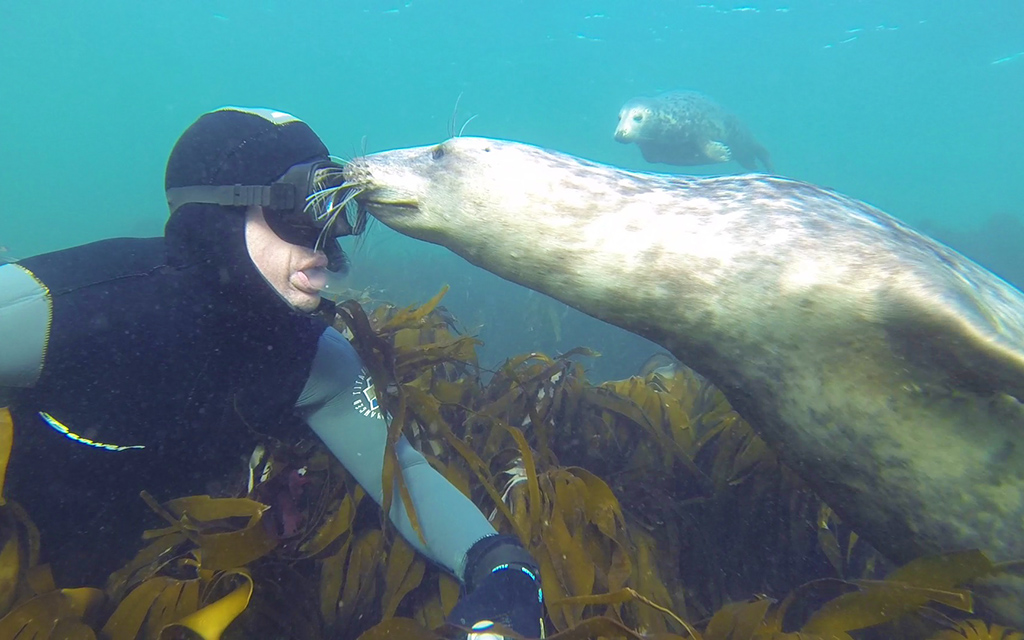
Photo credit: Ben Burville
The simple freedom you get with snorkelling means you can have some fantastic natural marine life encounters. And with the UK’s varied coastline, you don’t have to travel too far to get your sea life fix.
So, if you are planning on dusting off your snorkelling kit in 2024, read on and be inspired. As we look at six of the top marine creatures you are likely to see when snorkelling in the UK.
1. Seals
No list of UK marine life would be complete without the playful seal. Our coastline is home to two types of seals – the less common harbour seal and the grey. And it is most likely the grey seal you will encounter on your snorkelling adventures.
The British Isles is home to 40% of the global population of grey seals, who thrive in our temperate waters. These intelligent creatures spend around two-thirds of their life in the water, even sleeping out at sea. And, while they may be cumbersome on land, grey seals are fast, agile and mischievous underwater. Which is where the fun begins!
Affectionately known as sea puppies, grey seals can be super-curious, and snorkellers are advised to let the seal come to them – this is known as passive interaction. But if you are lucky, your patience will be rewarded - expect nibbled fins, close swim-pasts and displays of underwater exuberance that can make for a memorable snorkel trip!
Best places to see seals: Farne Islands (Northumberland), Lundy (off Devon’s north coast), St Abbs (Scotland), Skomer Island (Pembrokeshire) and Isle of Man.
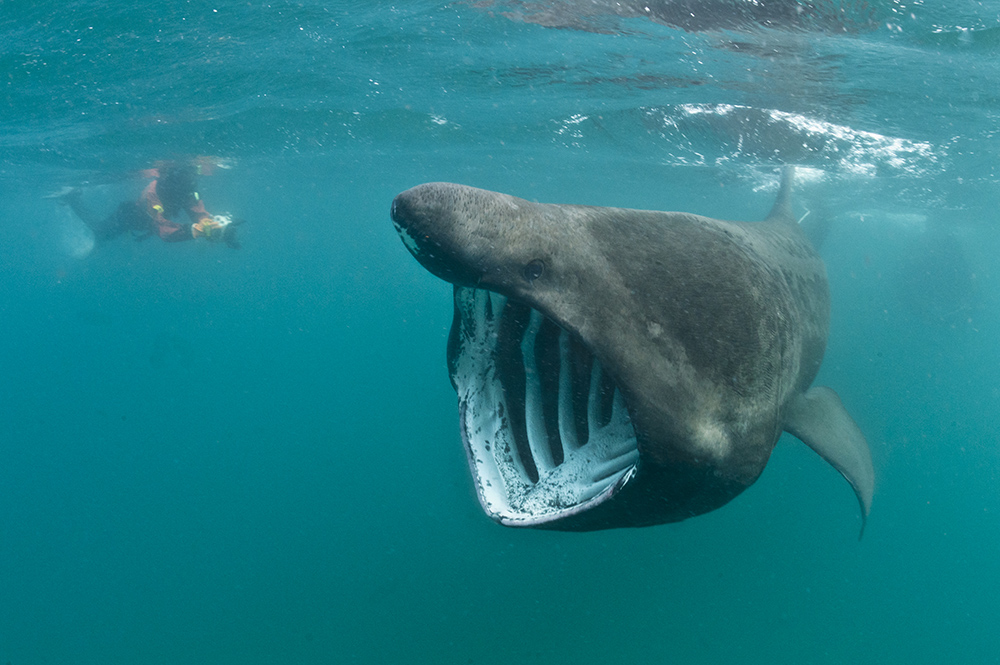
2. Basking Shark
Reaching up to 12 metres in length, the basking shark is the ultimate gentle giant. And these magnificent creatures can be found at some key sites around the UK, meaning a snorkelling encounter with a ‘basker’ is always possible.
The world’s second largest fish, basking sharks are filter feeders and arrive in UK waters between May and October to gorge on our nutrient-rich waters before embarking on their journey south for the winter. As a snorkeller, the basking shark is an awe-inspiring sight as they typically glide in a zig-zag motion just under the water’s surface with their mouths wide open feeding on plankton.
This protected species is harmless, but their large size – they can weigh up to seven tons – means the best way to enjoy your basking shark encounter is at a safe and respectful distance.
Best places to see basking sharks: the western tip of Cornwall, Pembrokeshire, Isle of Man, Oban (Scotland) and the Inner Hebrides.
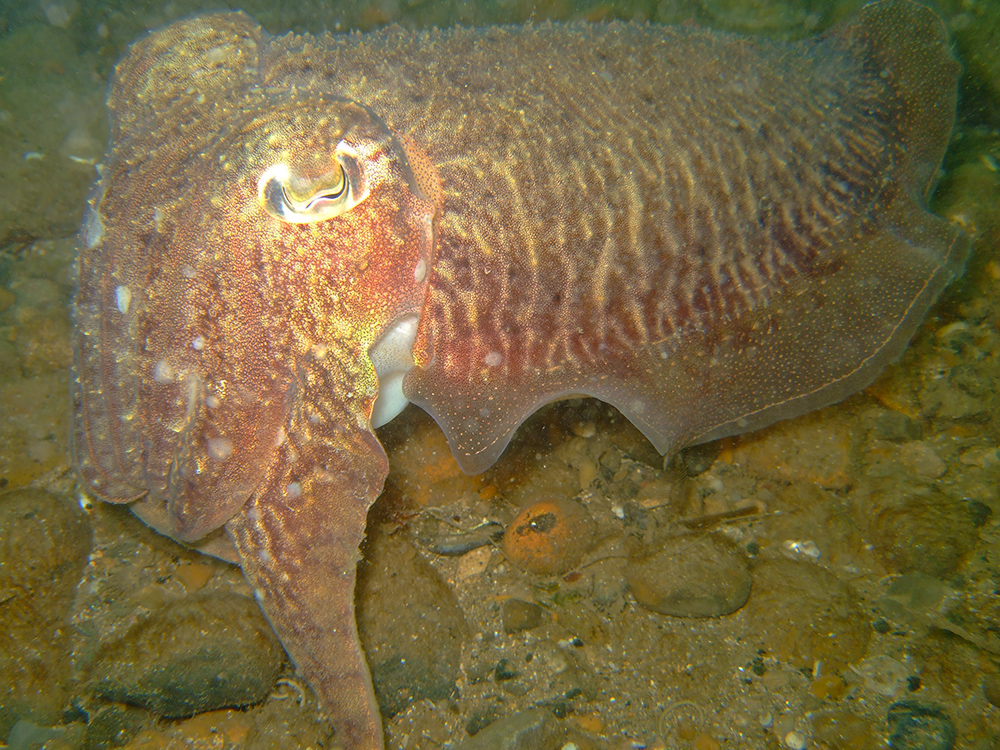
3. Cuttlefish
Related to squid and octopus, cuttlefish are not actually fish, but cephalopods. And this adds a whole new colourful dimension to your snorkel dive if you are lucky enough to see one.
The common cuttlefish is the largest cuttlefish to be found in UK waters and are known to be ferocious predators, feeding on fish, crabs and even smaller cuttlefish. These aquatic masters of disguise are also able to undergo rapid colour changes to camouflage themselves against predators or attract a mate. They can even display moving zebra-like stripes across their body for an awe-inspiring display. The way they move is pretty cool too, with a skirt-like fin that ripples as they glide through the water.
The common cuttlefish can be seen in UK waters all year round, with the particularly colourful mating season occurring in the spring and summer months. The best time to see cuttlefish is during an early evening or night snorkel when they are the most active.
Best places to see cuttlefish: Kimmeridge Bay and Lulworth Banks (Dorset), Porthkerris (Cornwall) and the Channel Islands.
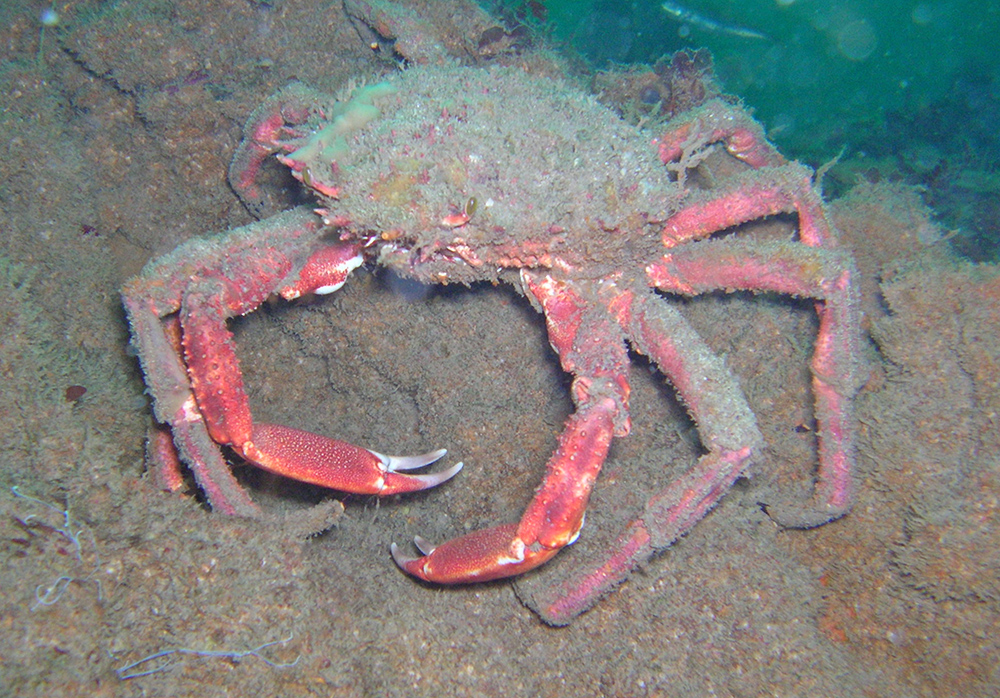
4. Spider Crabs
A large cluster of spider crabs moving across the seabed is a sight to behold – and these impressive creatures are within the reach of a snorkel dive. The best time to see the spectacle of spider crabs on the move – in some cases it can be in the hundreds, even thousands – is during their mating season in May and June when they venture into shallower waters.
The common spider crab is most widely found in the UK, predominately in the south west and in Ireland, although occasionally they can also be found in Scottish waters. When snorkelling with spider crabs, the first thing that strikes you is the size of these crustaceans. With their long, spindly legs, a male spider crab’s triangle-shaped carapace (its shell) can grow up to 20cm wide, and their front pincers up to 45cm in length. Their favourite food is shellfish as well as starfish and brittle stars.
Best places to see spider crabs: Stackpole Quay (Pembrokeshire) and Porthkerris Cove (Cornwall).
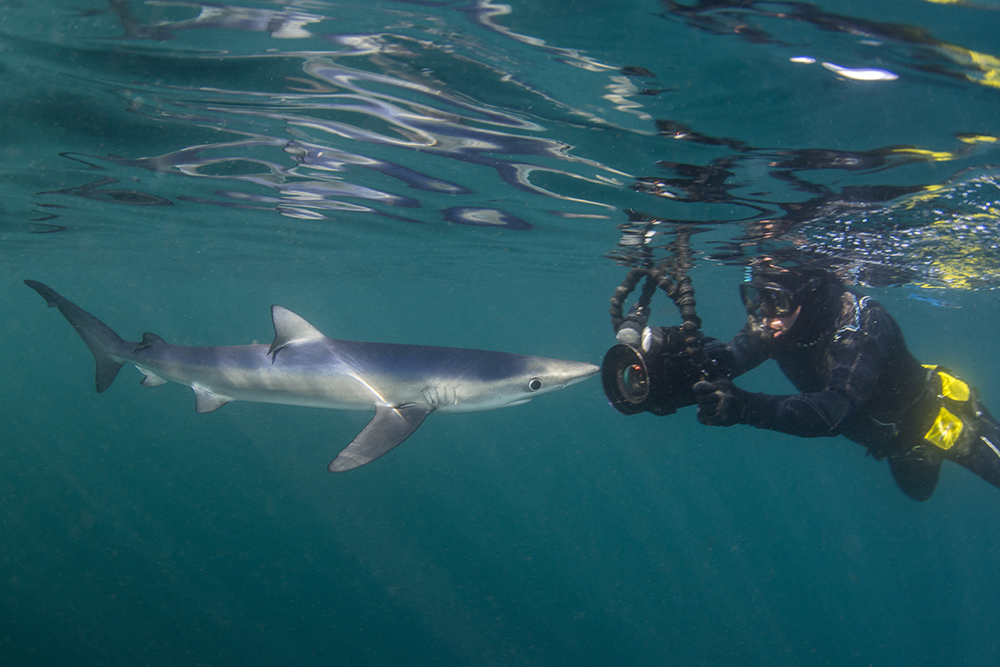
5. Blue Shark
Sleek, fast and strikingly beautiful, blue sharks make their way to the UK every summer as part of their migratory journey across the Atlantic, often travelling in groups. Measuring between 2m-4m in length, blue sharks have a slim, torpedo-shaped body and get their name from the metallic blue coloration of their body, contrasted with a stark white underneath.
With their long pectoral fins, the blue shark is easily recognisable and can be spotted off the south west coast of England during the summer months where they hunt for fish and squid.
Blue sharks are not considered to be aggressive towards humans but care and consideration should be taken when snorkelling in the water with these magnificent creatures. You also need to be a confident snorkeller, keep a respectful distance and be aware of the shark’s body language – check out the Marine and Coastal Wildlife Code for more guidance.
The best way to enjoy an encounter with a blue is to book with one of the recognised snorkel tour operators.
Best places to see blue sharks: Penzance and Falmouth (Cornwall), Plymouth (Devon) and Pembrokeshire.
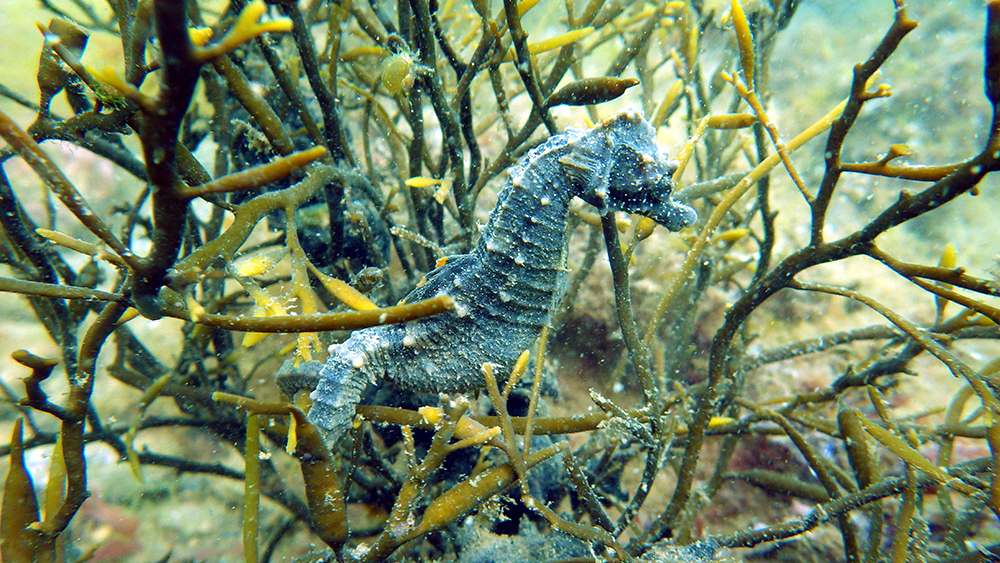
6. Seahorse
If you encounter a seahorse on your snorkel adventures, then you can count it as a coup, as sadly their populations are on the decline. So, to see one of these elegant creatures in its natural habitat is something pretty special.
The UK has two species of seahorses in its waters: the short-snouted and the long-snouted. Each variety measures no more than 15cm long, with their distinctive curled tail and fluttering dorsal fins. Both types are also able to change colour to camouflage themselves against predators, meaning they can be a little tricky to see. Seahorses live in the sheltered protection of shallow, temperate waters, typically making seagrass meadows and estuaries their home.
The UK’s seahorse populations are protected under the Wildlife and Countryside Act, which means you need a licence if intend to carry out an activity that could potentially disturb these delicate creatures. And you will need a licence to snorkel or dive in Dorset’s Studland Bay.
But if you do happen to see a seahorse on your snorkel dive, keep your distance and don’t touch or chase, avoid using a flash on your underwater camera and be careful with the beam of your torch. Instead, say still and calm and simply enjoy the moment before moving on.
Check out the Seahorse Trust for more information on seahorse safety. You can also take part in the Seahorse Trust’s campaign to protect seahorses by reporting any sightings to them.
Best places to see seahorses: Dorset and the south coast of England.
If you have been inspired by our marine life guide to get snorkelling, then why not make 2024 the year you take the plunge into your own snorkelling adventures. You never know what you may see!
Not yet a snorkeller?
Check out BSAC’s snorkel training programme or find a BSAC club near you that can get you started.

 Author: Alison Dando | Posted 28 Dec 2023
Author: Alison Dando | Posted 28 Dec 2023


